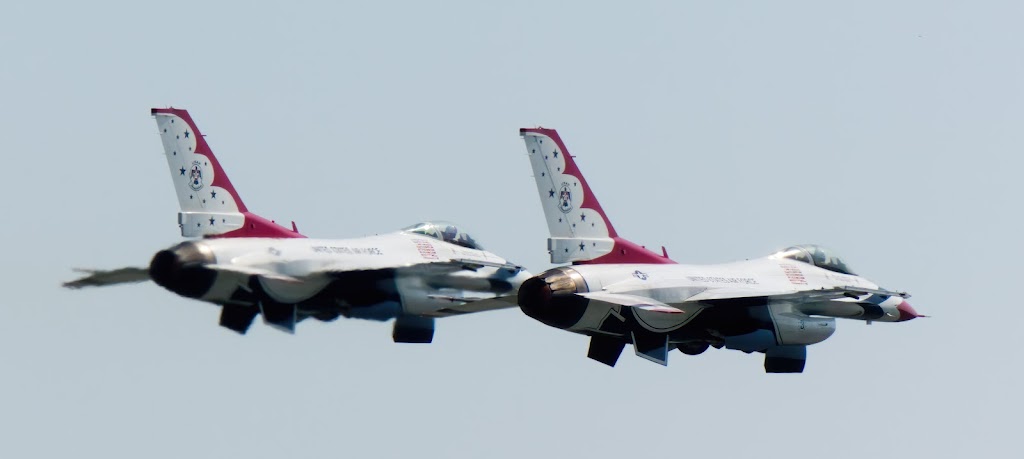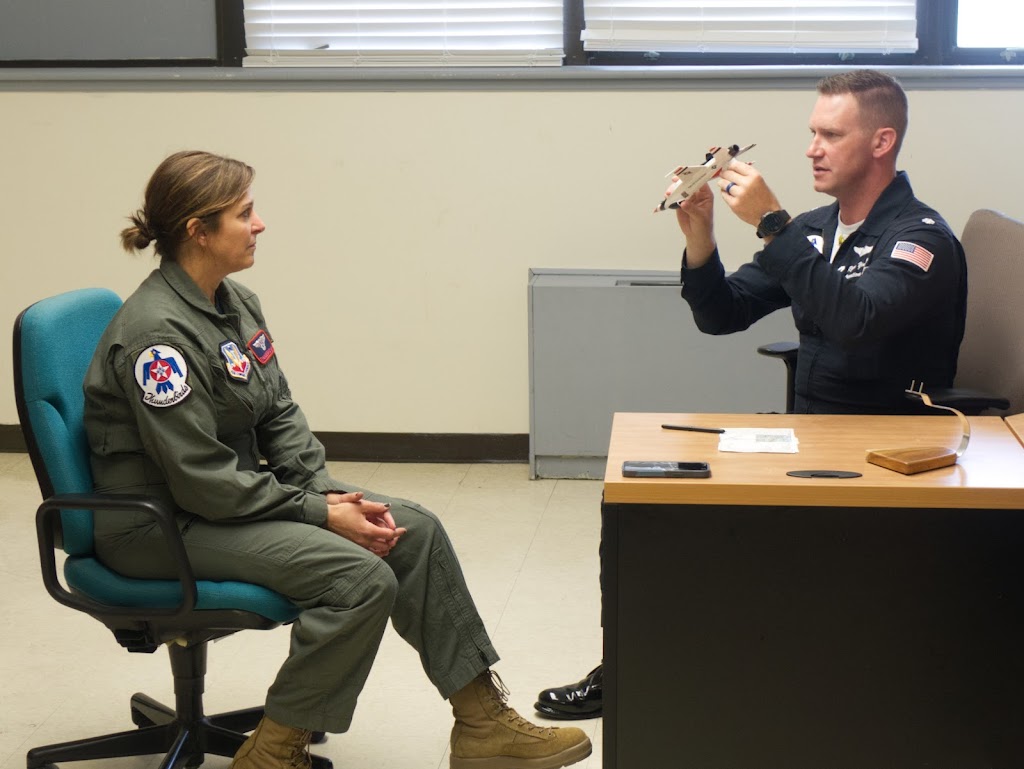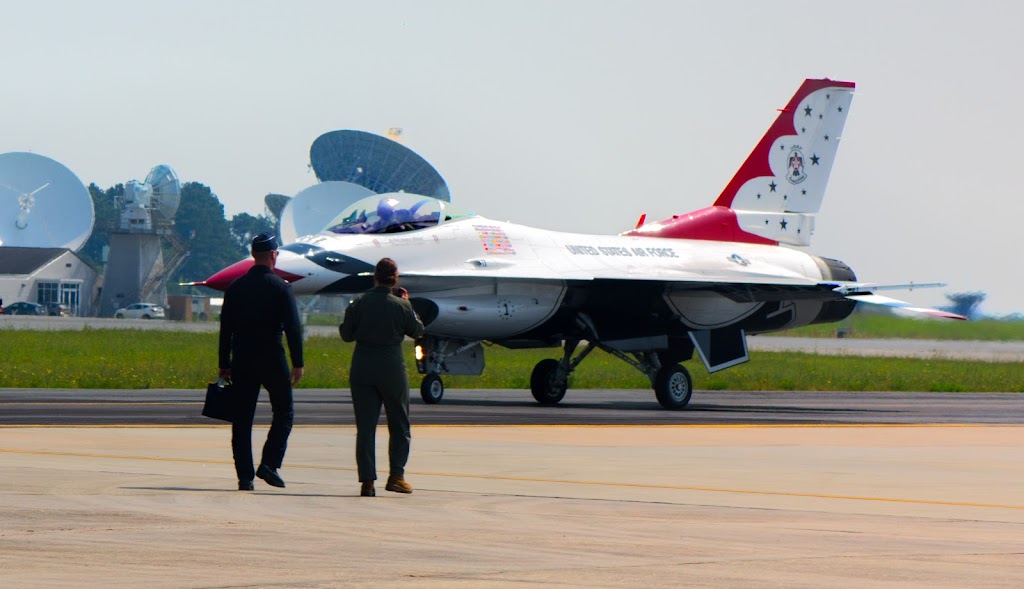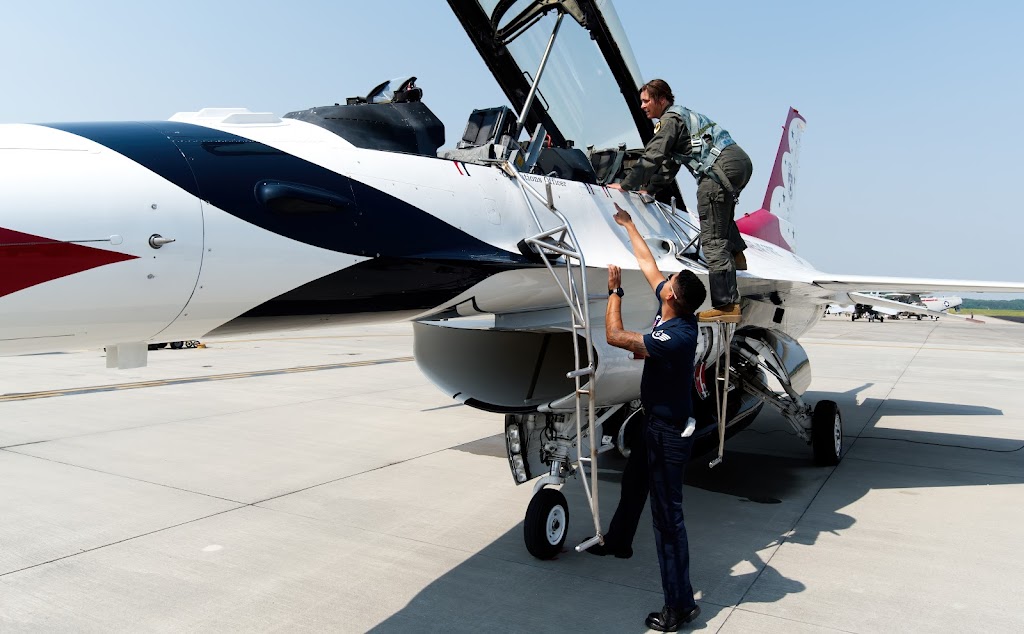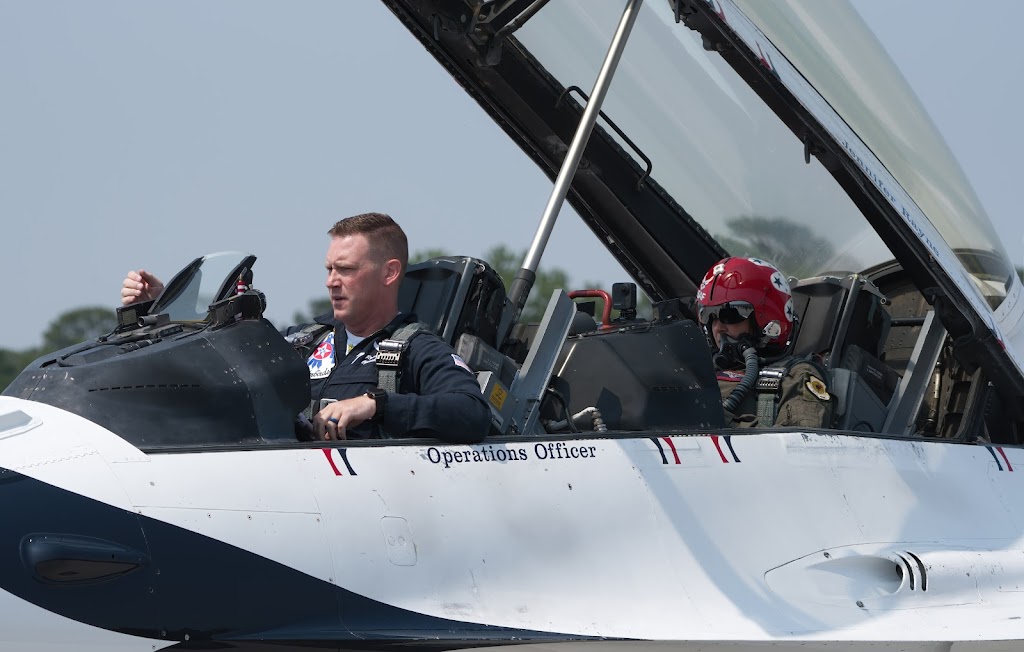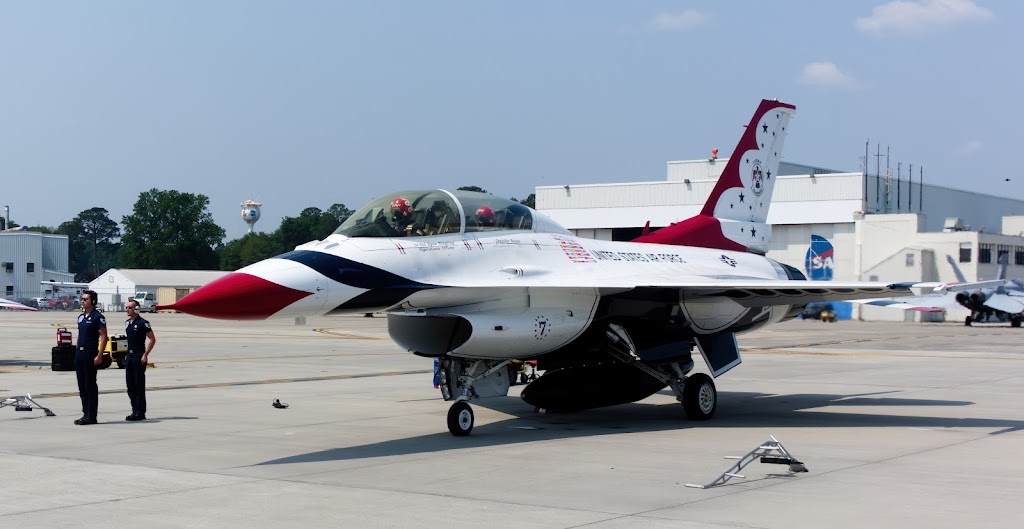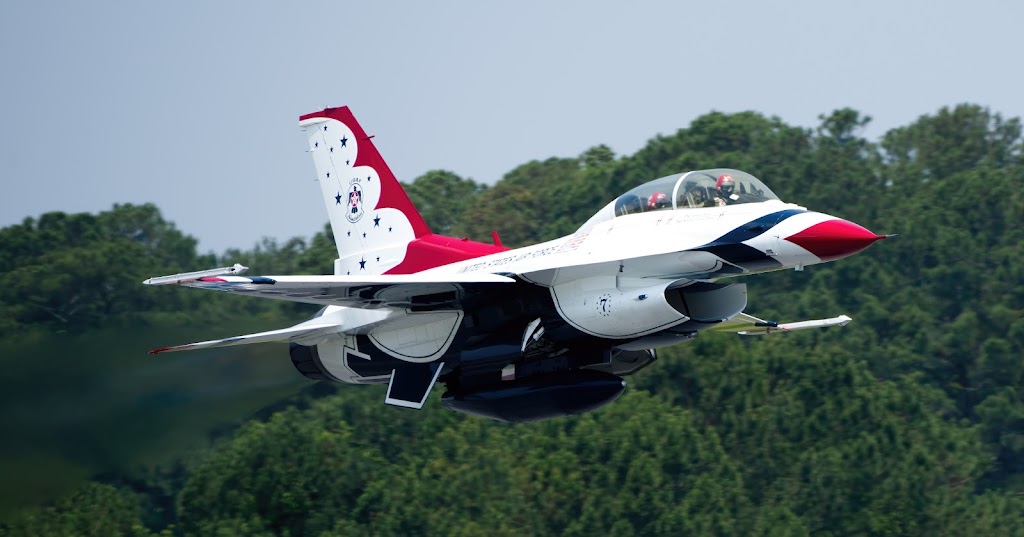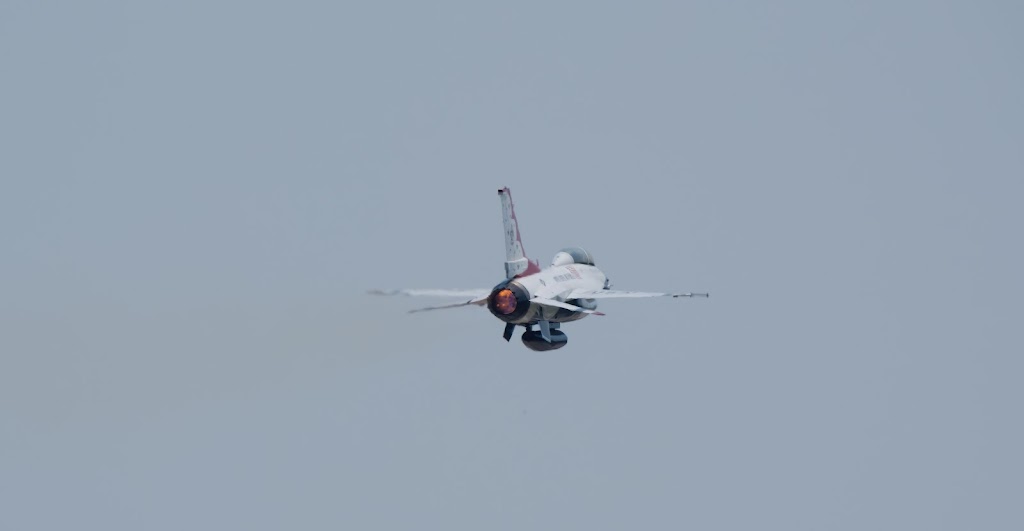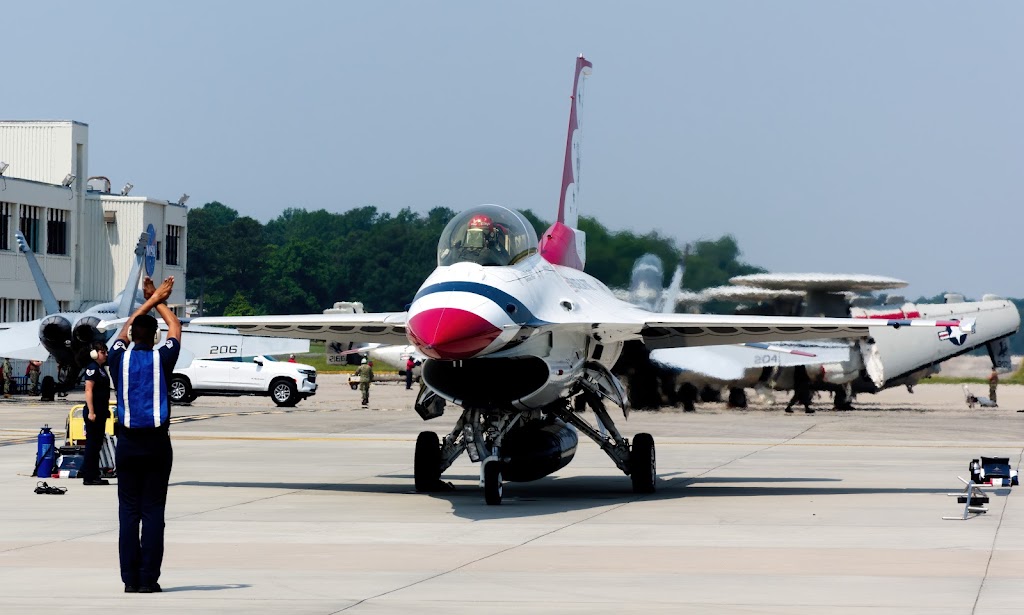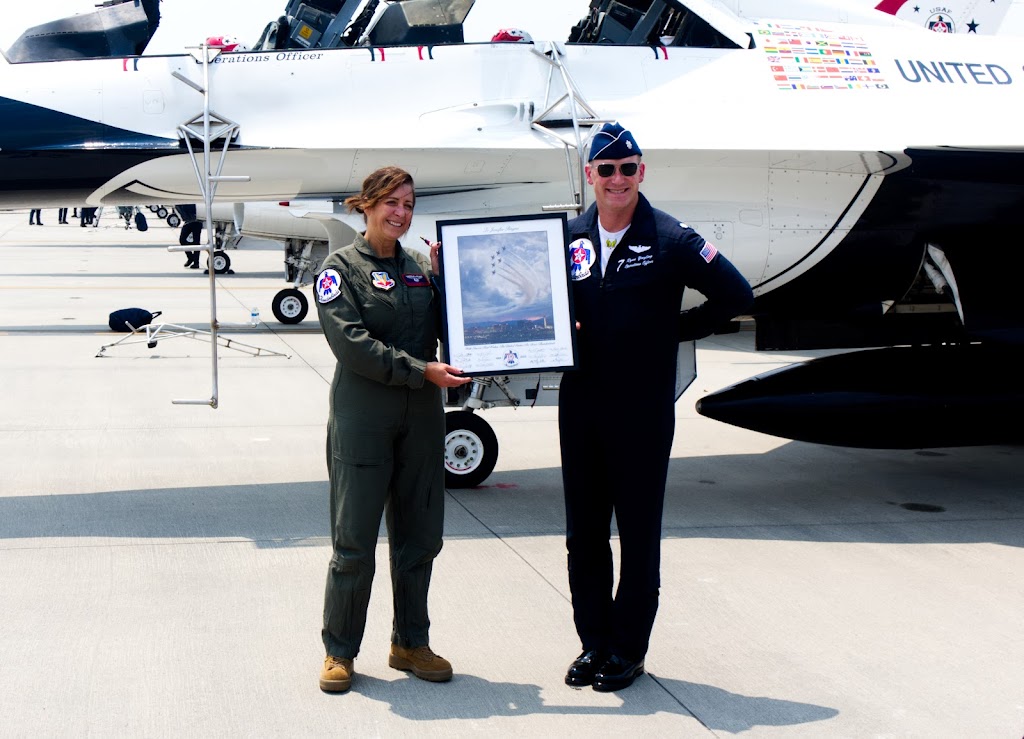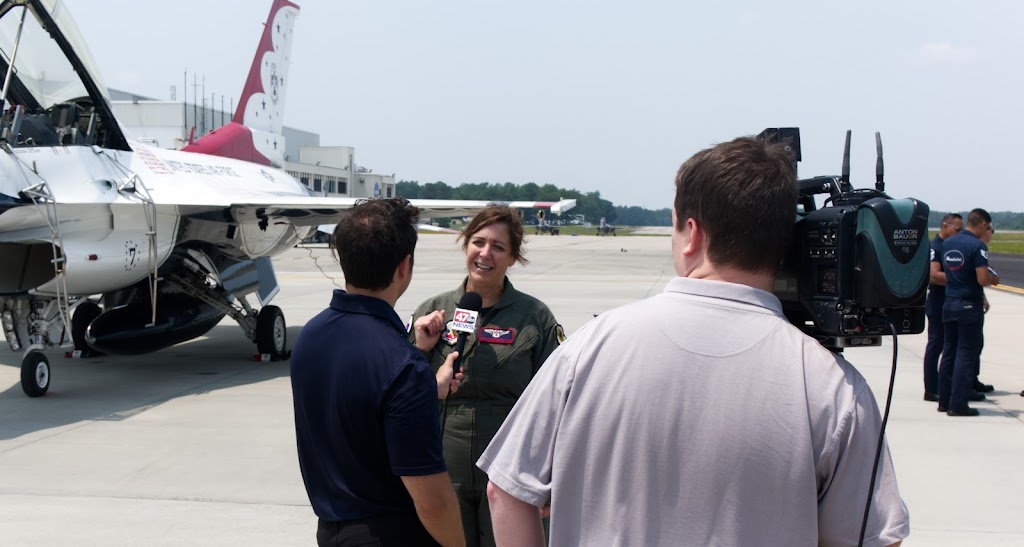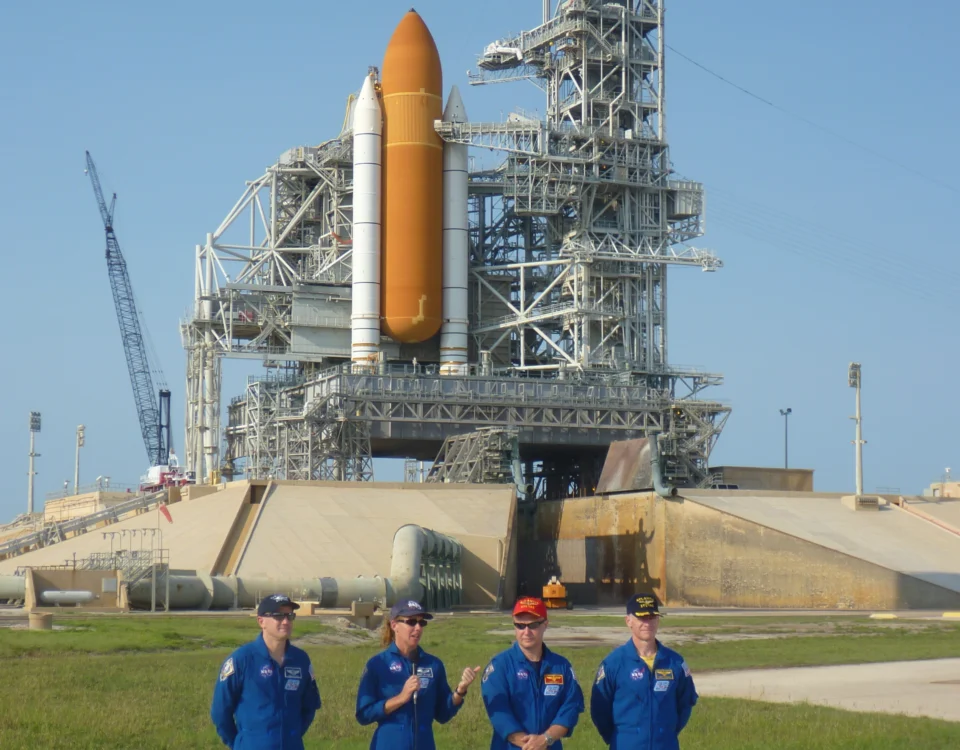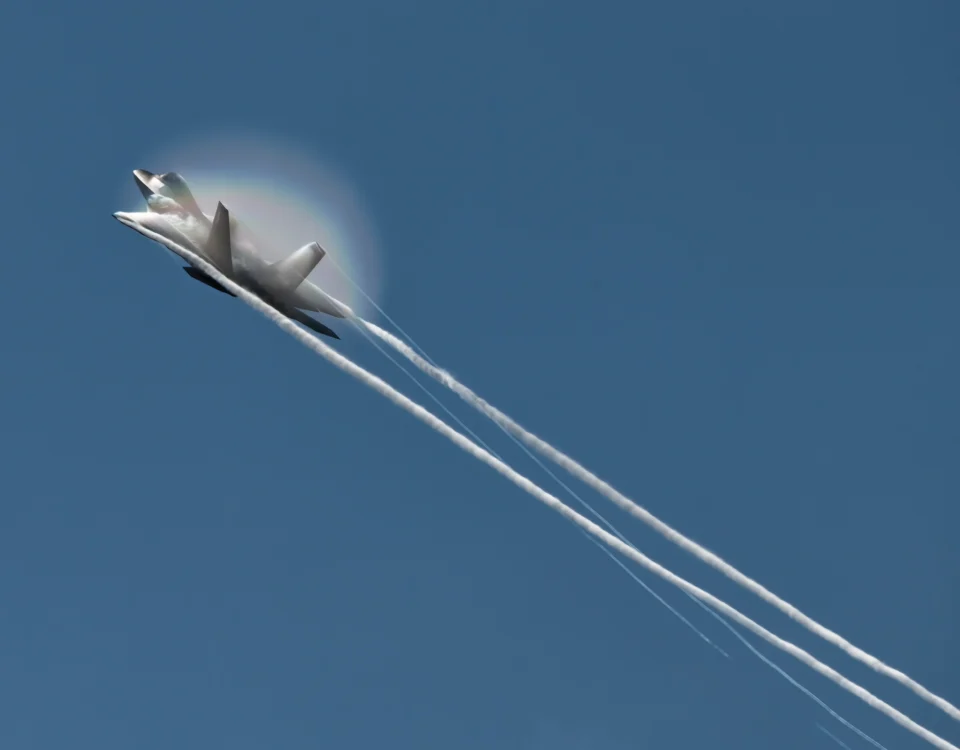Fans of the USAF Thunderbirds can always visit the team’s official website to find the names and read about the careers of the incredibly talented aviators who take to the skies in the famous red, white, and blue F-16 C and D aircraft. But on June 9, 2023, there was a new name added to the roster: Jenifer Rayne, aka “Hammer.”
One of the many public outreaches the Thunderbirds
accomplish each year is their Hometown Hero program, one that honors people who have made contributions to better their local community. At each of
the team’s airshow stops, the Hometown Hero selected for recognition
experiences the unforgettable thrill of flying with one of the Thunderbirds
aviators in an F-16D two-seater fighter aircraft.
For Maryland’s Ocean City Air Show of June 10 and 11, 2023,
Jenifer Rayne, principal of Pocomoke High School in southern coastal Maryland,
was selected for this honor. Aside from the responsibilities expected of a
principal, Rayne thoughtfully looked for ways to make the school experience and
lives of her students more rewarding. That led to the creation of a student
club called Speak Up, a group that not only provides students with a creative
appreciation for the culture of marginalized populations, but also gives
students a collective voice that is heard for the betterment of everyone at the
school. Rayne’s efforts were recognized by the Maryland State Education
Association, which recently presented her with the MSEA Human and Civil Rights
Award – an award for which she was nominated by her own students.
As fulfilling as the award presentation in Baltimore may
have been, there was an emphasis on excitement when Rayne and a small group of
friends and supporters arrived early the morning of June 9 at the main gate of
NASA Wallops Flight Facility. This NASA installation acted as home base for the
Thunderbirds in the days leading up to and during the Ocean City Air Show.
Entering D-1 Hanger, Rayne met with medical staff and team members who
outfitted her with a flight suit. Then, it was on to the critical flight
briefing, conducted by the pilot who would convey Jenifer on the fastest ride
of her life.
Lt. Col. Ryan Yingling is Thunderbird #7. Since being
selected for pilot training at Euro-NATO Joint Jet Pilot Training after earning
his navigator rating in 2008, Yingling has amassed over 3500 flight hours,
including time spent piloting A-10C aircraft in operational assignments over
the Republic of Korea.
Like all Thunderbirds team members, Yingling is calm and
professional, intensely focused. Seated at a desk and armed with a laptop
computer and a scale model of an F-16, the pilot conveyed to Rayne what she
would see, hear, and feel during the flight.
“So, what are we going to do today?” Yingling asked
rhetorically. “Fly an airplane. Fly a very fast airplane. And do things in an
airplane that you’ll never do in an airplane again.”
Yingling began a detailed description of the cockpit environment. Despite the fast flow of the information, Rayne appeared nearly serene, taking it all in as topics were ticked off ranging from restraint systems to cockpit ventilation.
The inertial reel of the cockpit harness can be locked into
place or, with the control in the aft position, it’s released and allows
freedom of movement.
“We’re going to keep it in the aft position all day today,”
Yingling explained. “It’s not going to help us with aerobatics, or going upside
down, or anything like that – unless we have an issue with stopping distance.
If we feel like we’re concerned about the stopping distance of the aircraft,
then we have a hook on the back of the aircraft that can grab a cable. If we
have to take the cable, which is here at Wallops, then we will lock our harnesses.
That way, when it slows us down real quick like we’re landing on an aircraft
carrier, our face doesn’t go into the console. We don’t want to damage the
pretty helmets,” he concluded with a smile.
Rayne would be able to adjust a cooling airflow bezel during
the flight – but that action comes with a slight caution.
“When you reach down to move that,” Yingling said, “just be
cognizant that the ejection handle is right there in front of it. Any time you
are moving about in the cockpit, we want to move very deliberately. We don’t
want to catch anything on our flight suit cuffs, or any other equipment that
might break. Same thing around the ejection handle – we don’t want to
accidentally grab onto it.”
Adding some reassuring news, Yingling noted that the ejection
handle has to be armed, and then requires 40-50 pounds of upward pressure to
actually initiate ejection.
“So, if you bump it, don’t worry about it.”
Of course, a central component of the briefing was to
prepare “Hammer” for the g-forces she would soon encounter. Yingling elaborated
on a simple mantra: squeeze, breath, here come the g’s…He stressed the proper
way to brace the lower body, encased in g-suit protection, and the importance
of a metronome-like approach to breathing. The target is roughly 70-80% lung
capacity, to avoid blacking out.
“The reason we don’t want to take a real deep breath? When
the g’s push on our chest…” Yingling forcefully exhales. “All out – and now,
nap time. And we don’t want to do that.”
After a final review of the maneuvers planned, the long walk
from the hanger facility to the flightline began. All eight of the Thunderbirds
aircraft were precisely aligned on the tarmac, but as Rayne and Yingling neared
#7, Thunderbirds 1 through 4 pulled away to noisily initiate an airshow
familiarization flight.
Minutes later Rayne joined them in the skies, Yingling
initiating a steep, powerful climb in the F-16 just seconds off the runway.
What followed were all of the acrobatics and resulting sensations that Rayne
had been prepared for that morning – but actually experiencing them was likely
something else entirely.
Surely a highlights of the flight came when Yingling guided
Thunderbird #7 over Pocomoke High School, where Rayne’s students were gathered
to cheer her on as she flashed by, the F-16 banking with a trail of smoke in
its wake.
In less than an hour it was over, “Hammer” standing next to
the F-16 with an elated look on her face. Yingling proudly noted that she had
experienced 9.3 g’s at one point in the flight – an imposing force.
“I was awake the whole time – they gave me the
breathing techniques and the crew prepared me for everything we were doing
today,” Rayne enthused to a local WMDT-ABC reporter covering her flight. “The
turns, the rolls, and going upside down… It was really one of the best days of
my entire life.”
The Hometown Hero was now off-duty. But Lt. Col. Yingling
had myriad other tasks to oversee.
When he’s not at the controls of Thunderbird #7, Lt. Col.
Yingling has a tremendous responsibility as the leader of the team Operations
Section. Under his domain are team communications, computer systems analysts,
training, standardization and evaluation, aircrew flight equipment, and airlift
support.
“It’s a 370 day a year operation, 25 hours a day, eight days a
week,” Yingling emphasized. “I have people that work multiple jobs just to make
this happen. We take 70 people on every trip that we do, and we can only fit
nine in our own jets. So, we have to reply on Air Force airlift. We take about
40 to 50,000 pounds of equipment to every show. And then we rely on the airshow
team, the show hosts, the directors to secure a lot of our ground equipment.
But each and every day we are demonstrating the Air Force’s combat
capabilities.”
Over the weekend the USAF Thunderbirds went on to fly out of
their temporary base at NASA Wallops Flight Facility while headlining two days
at the Ocean City Air Show, an event that played out in near perfect weather.
The tens of thousands of spectators crowding the beach and boardwalk were
thrilled by the show – but understandably, no one was more thrilled during this
particular visit by the Thunderbirds than Jenifer Rayne.



